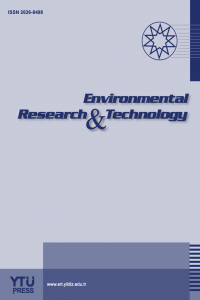Development of Velocity Sensor to Optimize the Energy Yield in a Biogas Plant
Development of Velocity Sensor to Optimize the Energy Yield in a Biogas Plant
Bending Beam, Biogas Optimization, Sensor, Velocity,
___
- European Biogas Association, EBA, "European Biogas Association," 2016. [Online]. Available: http://european-biogas.eu/wp-content/uploads/2017/01/Graph-1-Number-of-biogas-plants.png. [Accessed 20 03 2017].
- Renewable Energy Policy Network for the 21st century, REN21, "RENEWABLES 2016, GLOBAL STATUS REPORT," Paris, 2016.
- Clean Energy Wire, "Germany’s greenhouse gas emissions and climate targets," 01 02 2017. [Online]. Available: https://www.cleanenergywire.org/factsheets/germanys-greenhouse-gas-emissions-and-climate-targets#dossier-references. [Accessed 20 03 2017].
- H. Naegele, . A. Lemmer, . H. Oechsner and T. Jungbluth , "Electric Energy Consumption of the Full Scale Research Biogas Plant “Unterer Lindenhof”: Results of Longterm and Full Detail Measurements," Energies, vol. 5, no. 12, p. 198–5214, 2012.
- L. Wiedemann, . F. Conti, T. Janus , M. Sonnleitner and W. Zörner , "Mixing in Biogas Digesters and Development of an Artificial Substrate for Laboratory-Scale Mixing Optimization," Cheical Engineering and Technology, no. 40, p. 238–247, 2017.
- P. Weiland, "Biogas production: current state and perspectives," Applied microbiology and biotechnology, no. 85, pp. 849-860, 2010.
- N. Ganidi, S. Tyrrel and E. Cartmell, "Anaerobic digestion foaming causes – A review," Bioresource technology, pp. 5546-5554, 2009.
- K. Karim, R. Varma , . M. Vesvikar and . M. Al-Dahhan, "Flow pattern visualization ofa simulated digester," Water research, no. 38, p. 3659–3670, 3 June 2004.
- P. Stroot, K. McMahon , R. Mackie and . L. Raskin, "Anaerobic codigestion of municipal solid waste and biosolids under various mixing conditions--I. Digester performance.," Water res., no. 2, 2001.
- H. M. Sherwin K, Thermofluids, New York: NY: Chapman & Hall, 1996, p. 213.
- The Engineering Toolbox , "The Engineering Toolbox," [Online]. Available: http://www.engineeringtoolbox.com/pitot-tubes-d_612.html. [Accessed 21 03 2017].
- OMEGA Engineering, INC., "Omega," 2017. [Online]. Available: http://www.omega.com/prodinfo/anemometers.html. [Accessed 21 03 2017]
- I. S. o. E. Meeting, Electrochemistry in Molecular and Microscopic Dimensions: Proceedings of the 53rd Annual Meeting of the International Society of Electrochemistry : Jointly Organized with the GDCh-Fachgruppe Angewandte Electrochemie, Düsseldorf, Germany, 15-20 September 2, Elsevier, 2003, p. 3291
- M. Brehmer and . M. Kraume, "Experimental Study to Develop a Control System for Submersible Mixers in Biogas Plants," Czasopismo Techniczne, no. 84, 18 October 2016.
- Yayın Aralığı: Yılda 4 Sayı
- Başlangıç: 2018
- Yayıncı: Yıldız Teknik Üniversitesi
Copper Removal From Ammoniacal Spent Etchant by Using Magnetic Nanoparticles
Oumer Ali Yassin, Zehra Semra Can, Seval GENC, Ebru TOKSOY ONER, Gul Gulenay Haciosmanoglu
Development of Velocity Sensor to Optimize the Energy Yield in a Biogas Plant
Abdullah Nsair, Olaf Bade, Kerstin Kuchta
Adsorption of 2,4-Dichlorophenoxyacetic Acid on Peanut Shells: Effect of Initial Concentration
Elcin Demirhan, Elif Culhaoglu
Anil Tevfik Kocer, Benan Inan, Didem Ozcimen
Sub Optimal E-Waste Management and the Lost Opportunity
Rakesh TYAGİ, Priyanka KAUSHAL
Yunzile Dzhelil, Evgeniy Ganev, Boyan Ivanov, Dragomir Dobrudzhaliev
Fuzzy Approach to Predict Methane Production in Full-Scale Bioreactor Landfills
